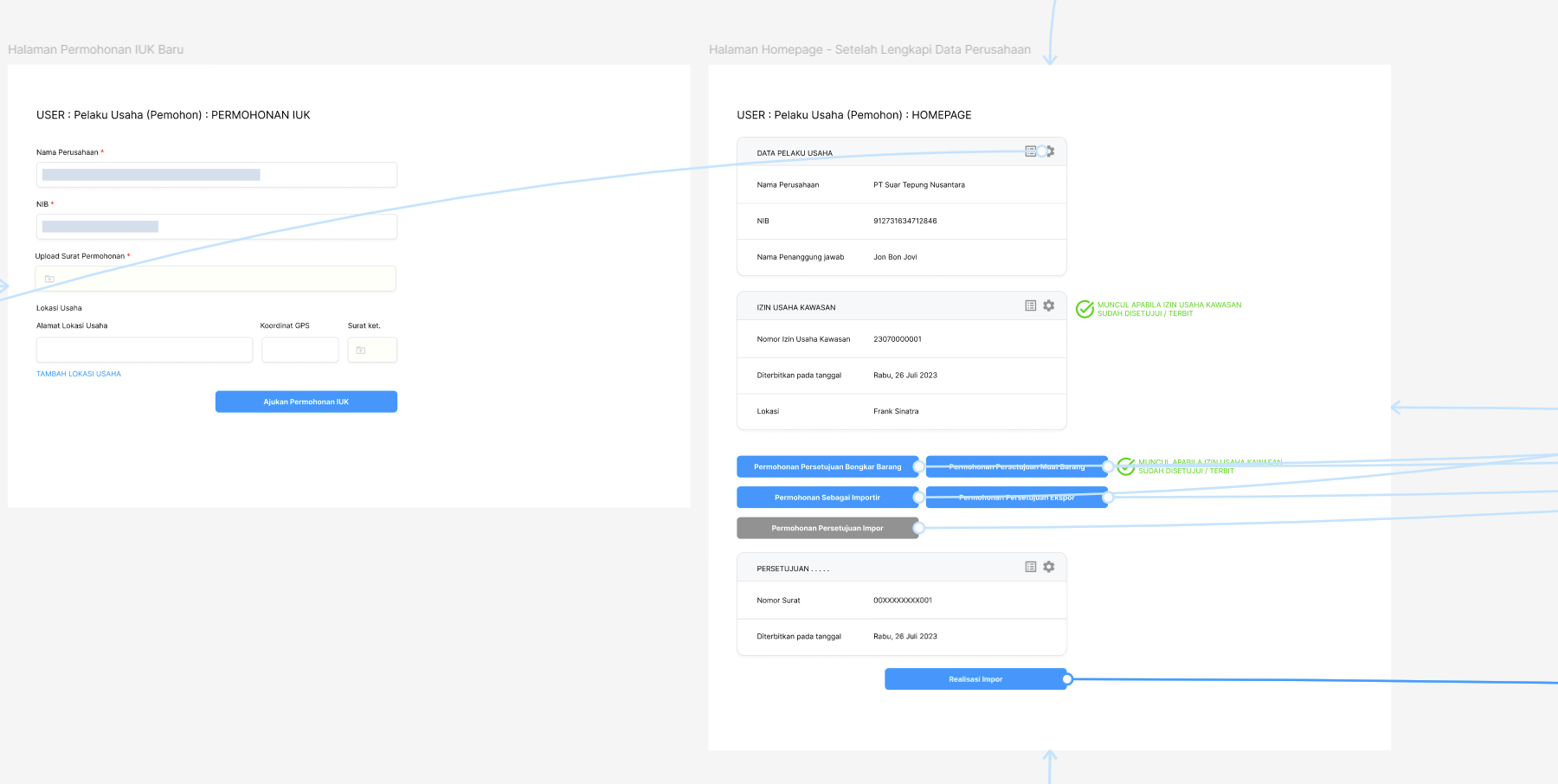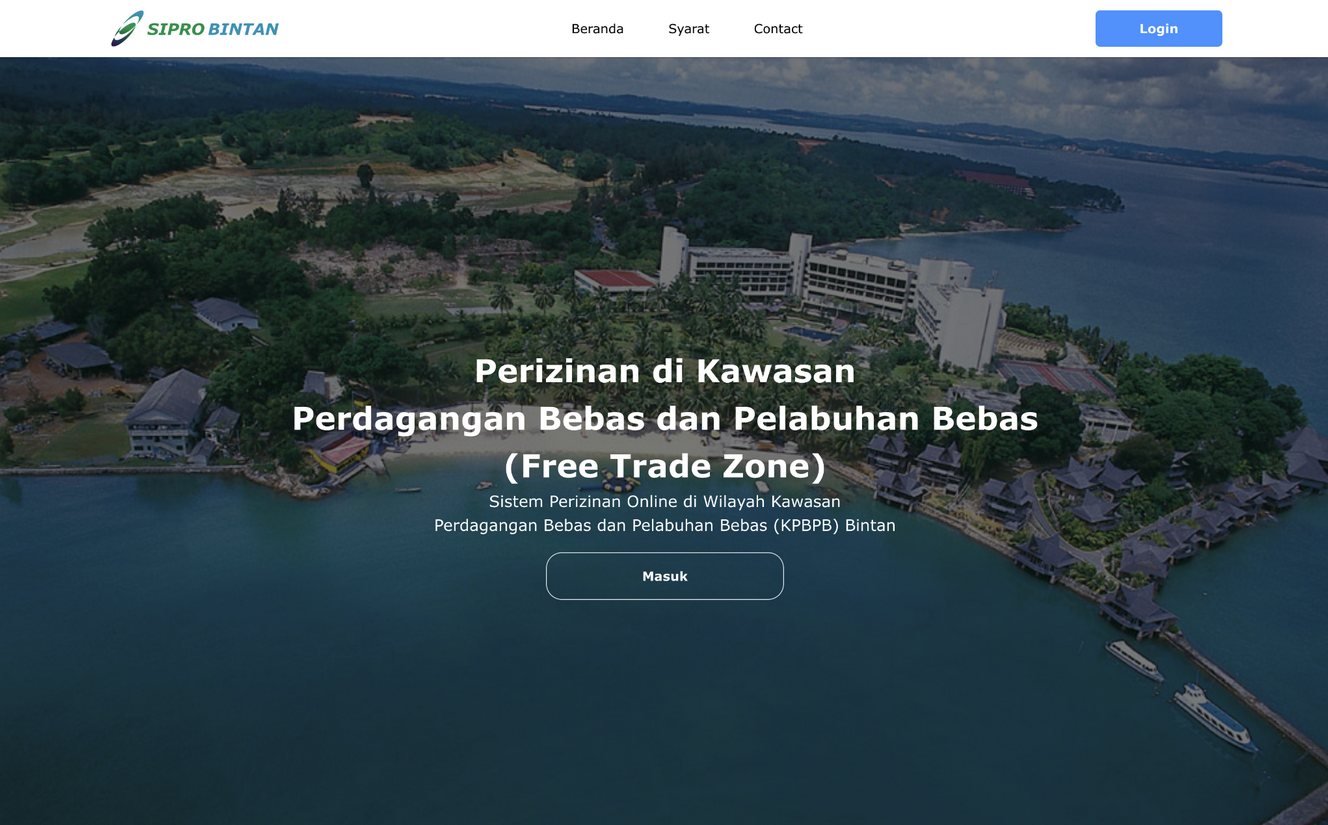Trade Permit
Clear Control of Trade Flow
Together with WSU Studio, We embarked on a challenging yet exciting project to develop a licensing system for the trade area in Bintan. The journey began with our team traveling to the location to perform an in-depth analysis. Our first visit was crucial as it set the foundation for understanding the specific needs and challenges faced by the stakeholders in Bintan.
Upon arrival, we arranged a series of meetings with the local authorities and key personnel involved in the licensing process. These initial discussions were pivotal. We dedicated ample time to listen carefully to their concerns and the problems they were encountering with the current system. It was clear that the existing process was highly flexible, allowing for verbal adjustments at any time, which posed a significant challenge in terms of standardization.
Setting Up
To ensure we captured all necessary requirements efficiently, we conducted rapid requirement gathering sessions. Within these sessions, we mapped out the entire process flow, identifying bottlenecks and areas that needed improvement. Our team worked tirelessly to create a detailed flowchart and comprehensive discussion report, documenting every aspect of the conversations and findings.
In an effort to maintain momentum and demonstrate our commitment, we developed an initial prototype within just one day after our first meeting. This quick turnaround was intended to provide a tangible representation of our vision and gather immediate feedback from the stakeholders. The prototype aimed to address the primary pain points and offer a glimpse of the potential improvements.

Reality Checks-In
However, our plan to receive direct feedback quickly hit a snag. Despite our efforts, feedback was not forthcoming as expected. This lack of immediate response led to a broader development scope, making it increasingly challenging to obtain detailed feedback on each feature. The absence of timely feedback created uncertainty and required us to anticipate potential issues without concrete guidance.
The complexity was further compounded by the fact that this was a new business process for BP Bintan. Historically, their business processes had been highly adaptable, with changes made on-the-fly through verbal communication. Transitioning to a structured, systematized process required clear and defined business rules, which was a significant shift for the organization.
Backward-Forward
Through these deliberate and methodical steps, we were able to overcome the initial delays and foster a more collaborative and productive environment. This approach not only resolved the immediate issues but also laid the groundwork for a more effective partnership moving forward.
Step 1: The Approach
To address the challenges caused by the feedback delays, we implemented a structured and proactive approach. First, we initiated regular follow-ups with the stakeholders. These follow-ups were essential in maintaining communication and ensuring that we were continuously aligned with their needs and expectations. By establishing a consistent follow-up schedule, we were able to keep the project on track and address any emerging issues promptly.
Step 2: Finding The Problem
Next, we organized in-depth discussions to delve deeper into the specific requirements and pain points. These discussions provided a platform for stakeholders to voice their concerns and for us to gather detailed insights. Through these conversations, we identified the root causes of the delays and misunderstandings, allowing us to tailor our approach more effectively.
Step 3: Step By Step
Finally, we transitioned to a step-by-step approach. By focusing on one feature at a time, we facilitated a more structured and less intimidating evaluation process. This method not only helped the stakeholders provide more precise feedback but also enabled us to make incremental improvements, gradually refining the system. This iterative process ensured that we could address any issues promptly and adapt the system to better fit their needs.
Through a series of iterative development cycles, the team built a robust communication platform within the app. It allowed workers to make affordable calls, send messages, and share photos and videos with their families back home. They also incorporated language translation features to overcome communication barriers.
Through perseverance and continuous collaboration, we managed to complete the project, culminating in a thorough User Acceptance Testing (UAT) phase. This phase was critical to ensure that every feature met the established requirements and functioned as intended. The stakeholders' involvement during UAT was indispensable, as their insights helped fine-tune the system to better serve their needs.
Ultimately, the project reached a successful conclusion. The licensing system was fully operational, with features that matched the specifications and expectations. This journey was not just about building a system but also about fostering a new way of operating that would bring long-term efficiencies and clarity to the licensing process in Bintan.
Final Product
Delivery & Hand Over

After the rigorous development and testing phases, we moved towards product delivery. Our team assisted the stakeholders in deploying the licensing system on their servers, ensuring a smooth transition from the old, flexible process to the new, standardized system. This deployment was meticulously planned to minimize any disruptions and ensure that the system was fully operational from day one.
The deployment phase was followed by nearly two months of intensive training and customization. We conducted comprehensive training sessions to ensure that the stakeholders were well-equipped to use the new system effectively. These sessions covered every aspect of the system, from basic operations to advanced features, ensuring a thorough understanding among all users. Additionally, we made further adjustments to the system based on the feedback received during the training period, fine-tuning it to meet their specific needs better.
Our commitment to the project's success did not end with the deployment and initial training. We pledged to continue supporting the system as the business processes evolved. Understanding that business needs are dynamic, we assured the stakeholders that we would be there to make necessary updates and enhancements, ensuring the system remains aligned with their future requirements.
This ongoing collaboration reflects our dedication to delivering not just a product but a sustainable solution that grows with the organization. By providing continuous support and adapting to new developments, we aim to ensure that the licensing system remains a valuable tool for BP Bintan, enhancing their operational efficiency and effectiveness in the long term.

Our client's profile: https://bip.bintankab.go.id.
